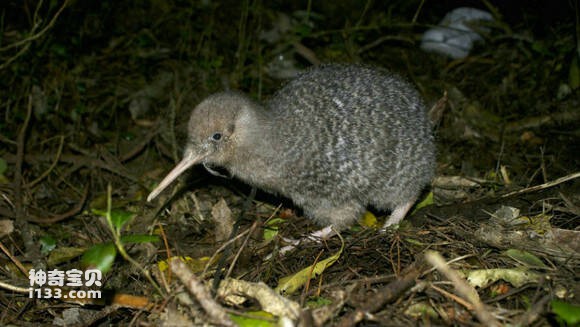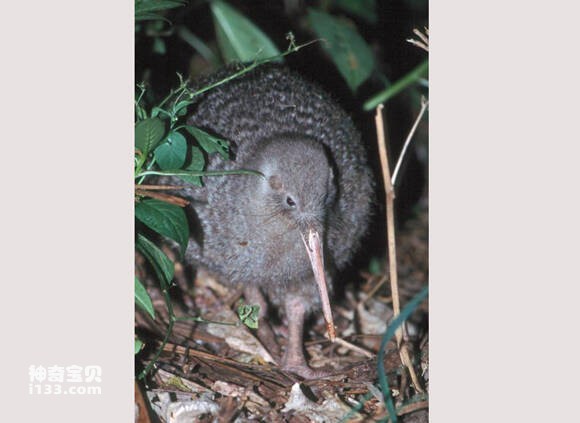Apteryx owenii
IUCN
LCBasic Information
Scientific classification
- name:Apteryx owenii
- Scientific Name:Apteryx owenii,Little Spotted Kiwi
- Outline:Landfowl
- Family:
Vital signs
- length:46-50cm
- Weight:2.125-4kg
- lifetime:About 30 years
Feature
National bird of New Zealand
Distribution and Habitat
The small spotted Kiwi Is found on the southwest coast of New Zealand's South Island and North Island, mainly Kapiti Is.
Small spotted kiwis live in burrows, and their nests are dug up for several weeks before they can be used, in order to allow moss and natural vegetation to regrow and provide camouflage.
Appearance
The small spotted kiwi is the smallest bird in the order Aptera, measuring about 35-45 cm long and weighing about 1.2-2.5 kg. It has a small head, a body shaped like a pear, covered with fluffy fine feathers, feathers are soft and featherless. The vestigial wings are covered with feathers, have no tail feathers, and cannot fly. He has short, powerful legs and is good at running. He can reach 10 miles per hour. The kiwi's beak is pointed and slender, about 10 cm long, with cat-like whiskers at the base of the beak; The nostrils are at the tip of the long, curved mouth rather than at the base of the mouth; Small eyes, poor day vision; The ear holes are large and developed, with long whiskers (possibly tactile) at the base of the mouth. The neck is short, the ears are highly sensitive and developed, the feathers are mottled dark brown, and the belly is pale with black stripes.
The sexes are dimorphic, and the females are much larger, with differences of more than 1 kg. The biggest
Details
Apteryx owenii, Little Spotted Kiwi, no subspecies.

A pair of small spotted kiwis may dig up to 100 burrows in their territory and use them as shelters, often changing homes daily. They do not leave their burrows during the day, except in dangerous situations. They usually come out at night. Foraging takes place about 30 minutes after sunset. It is dominated by insects, snails, spiders, worms, shrimp, and can even eat small lizards and mice, as well as fruit and berries that fall on the ground. The nostrils of the kiwi bird are not at the base of the beak like the thrush or the swallow, but at the tip of the mouth. Its sense of smell is very good, and it can smell the worm more than ten centimeters underground, and then dig it up with its claws or mouth. In addition, its mouth has an unexpected function - when it needs to rest, the mouth can be used as a third leg, like a tripod to support the body, easy and stable.

The small spotted kiwi is a strictly monogamous bird. Couples live together for at least 2 or 3 breeding seasons. Breeding period in late autumn, eggs in the female body of the gestation period of up to a month, during the whole pregnancy, the female bird must store enough fat, used to produce a good nutrition good bird eggs. Unable to fly, kiwis tend to nest in holes in trees at the base of their trunks, sometimes just on the ground. Kiwi reproductive ability is not strong, the general female bird to 1 year only the next egg, each time 1 to 2. Although the kiwi is small, its eggs are large, equivalent to a quarter of the female bird's own body weight, and even up to a third. The eggs are white or light green, incubating for 70 to 74 days, the incubation process is entirely responsible for the male bird, one week after birth, it continues to consume the remaining yolk in the body to provide nutrition, and then begins to follow the male bird to learn foraging and various survival techniques. The chicks take a long time, about four years to mature.
Listed in the International Red Book of Birds of the International Union for Conservation of Nature (IUCN), 2012 list ver 3.1 - Near Threatened (NT).
Listed in Appendix II of the Washington Convention: Primary Protection of animals.
Protect wild animals and eliminate wild meat.
Maintaining ecological balance is everyone's responsibility!








